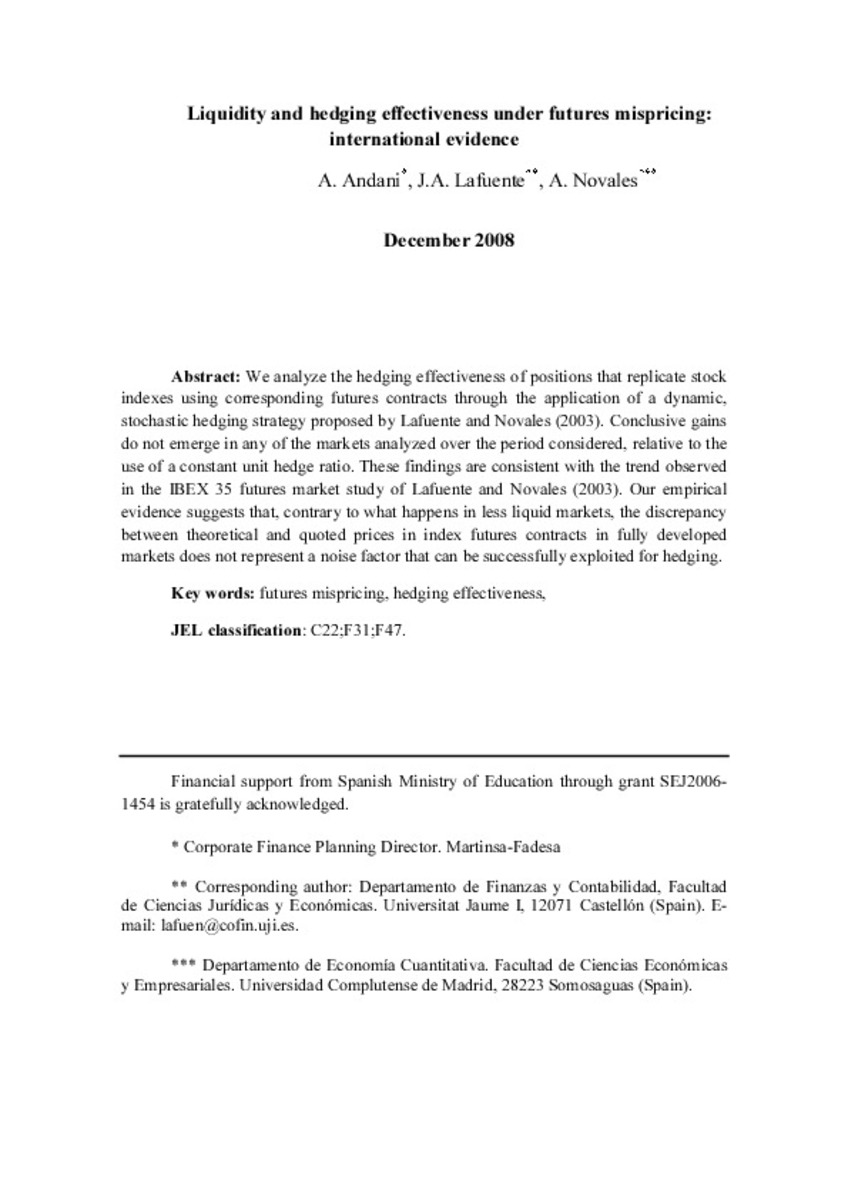Mostrar el registro sencillo del ítem
Liquidity and hedging effectiveness under futures mispricing: International evidence
| dc.contributor.author | Andani, A. | |
| dc.contributor.author | Lafuente-Luengo, Juan Angel | |
| dc.contributor.author | Novales, A. | |
| dc.date.accessioned | 2014-06-23T11:14:02Z | |
| dc.date.available | 2014-06-23T11:14:02Z | |
| dc.date.issued | 2009 | |
| dc.identifier.issn | 0270-7314 | |
| dc.identifier.uri | http://hdl.handle.net/10234/95622 | |
| dc.description.abstract | We analyze the hedging effectiveness of positions that replicate stock indexes using corresponding futures contracts through the application of a dynamic, stochastic hedging strategy proposed by Lafuente, J. A. and Novales, A. (2003). Conclusive gains do not emerge in any of the markets analyzed over the period considered, relative to the use of a constant unit hedge ratio. These findings are consistent with the trend observed in the IBEX 35 futures market study of Lafuente, J. A. and Novales, A. (2003). Our empirical evidence suggests that, contrary to what happens in less liquid markets, the discrepancy between theoretical and quoted prices in index futures contracts in fully developed markets does not represent a noise factor that can be successfully exploited for hedging. | ca_CA |
| dc.format.extent | 23 p. | ca_CA |
| dc.format.mimetype | application/pdf | ca_CA |
| dc.language.iso | eng | ca_CA |
| dc.publisher | Wiley | ca_CA |
| dc.relation.isPartOf | Journal of Futures Markets, 29, 11, p. 1050–1066 | ca_CA |
| dc.rights.uri | http://rightsstatements.org/vocab/CNE/1.0/ | * |
| dc.subject | future mispricing | ca_CA |
| dc.subject | hedging effectiveness | ca_CA |
| dc.title | Liquidity and hedging effectiveness under futures mispricing: International evidence | ca_CA |
| dc.type | info:eu-repo/semantics/article | ca_CA |
| dc.identifier.doi | http://dx.doi.org/10.1002/fut.20395 | |
| dc.rights.accessRights | info:eu-repo/semantics/openAccess | ca_CA |
| dc.relation.publisherVersion | http://onlinelibrary.wiley.com/doi/10.1002/fut.20395/abstract | ca_CA |
| dc.type.version | info:eu-repo/semantics/submittedVersion |
Ficheros en el ítem
Este ítem aparece en la(s) siguiente(s) colección(ones)
-
COFIN_Articles [213]







